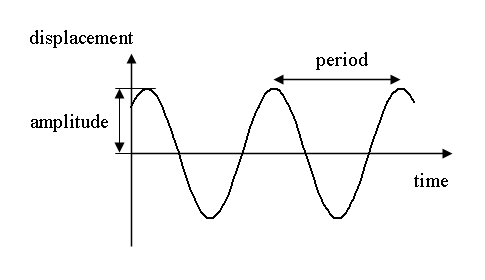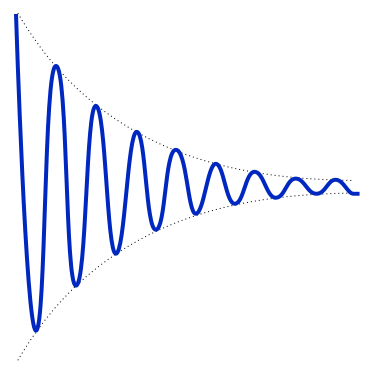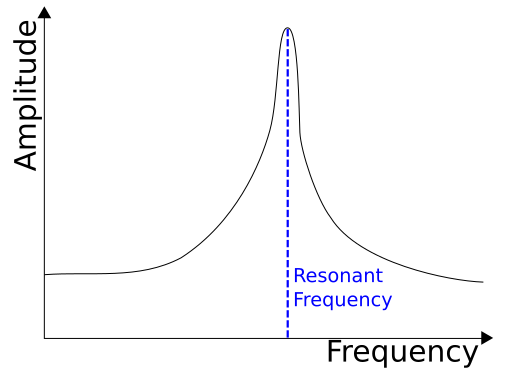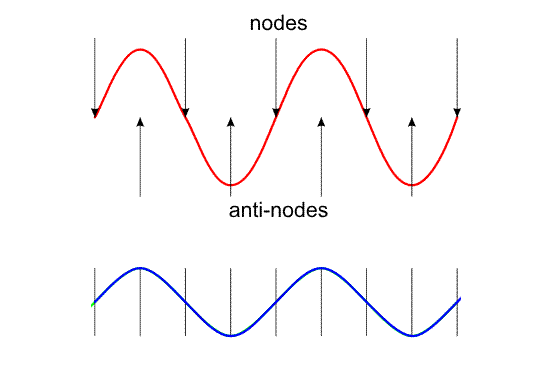Wave and Optics Question and Answer – Physics Grade XII NEB Solution
Wave and Optics Important Questions with Solution
1. Define wave and give some examples.
Ans. A wave is a disturbance from an equilibrium condition that propagates or travel with finite velocity from one region of space to another region of space. It is due to the repeated and periodic harmonic motion of the particles of the medium about their equilibrium positions called mean positions. For example, the wave that travels through the surface of the water is called water waves. Other examples of waves are mechanical waves, electromagnetic waves, radio waves, etc.
2. We say that a medium is a requisite for the propagation of a wave. So how does light travel in a vacuum where sound cannot travel?
Ans. Of course, a medium is necessary for the propagation of a wave. However, it does not mean that the materials medium is necessary for all waves for their propagation. In a vacuum, Scientists believe that there exists a hypothetical medium called ether medium which is highly rigid and tenuous and the light travels through the ether medium. When light travels through the ether medium, the ether particles vibrate about their mean positions, and the disturbance is propagated from one region to another region in the space. However, the sound waves are mechanical waves that need materials medium for their propagation. Since the ether is a nonmaterial medium, the sound waves cannot travel through it.
3. Explain what do you mean by free oscillation.
Ans. When a body capable of oscillating is slightly disturbed from its equilibrium position and left, the body oscillates under the action of restoring forces developed in the body itself. If there are no external resistive forces, the body keeps on vibrating forever with its natural frequency. The amplitude of vibration of the body never dies. If a graph draws between amplitude ‘A’ and time ‘t’ it looks like in fig. below.

a. Since there is no resistive force, the energy of the body remains unchanged. A graph between energy ‘E’ and time ‘t’ also looks like in fig. above when we replace displacement with energy
b. Such vibration of a body is called free vibration. For example, the motion of a simple pendulum in a vacuum is a free vibration.
4. What is dumped oscillation? Give an example.
Ans. The free vibration of the body is an ideal concept. In reality, there always exists a resistive force which goes on reducing the amplitude of vibration of the vibrating body. For example. in the case of a simple pendulum vibrating in air, the resistance reduces the amplitude of vibration of the pendulum bob, the energy of the vibrating body gradually decreases with time and finally becomes zero. As a result, the body comes to rest. Such vibration of a body is known as damped vibration or oscillation. If graphs are drawn between energy time and amplitude time, as shown in fig. below respectively are obtained.

5. What do you mean by resonant?
Ans. Resonant vibration is a special kind of forced vibration. When a body capable of vibrating is a force to vibrate with the help of an external periodic force, the body vibrates with the frequency of the source. If the frequency of the source is increased, not only the frequency of vibration of the body is increased but also the amplitude of vibration is increased. When the frequency of the source is equal to the natural frequency of the body, the body begins to vibrate with maximum amplitude. This kind of vibration of the body is known as resonant vibration. the phenomena are known as resonance. If we draw a graph between amplitude(A) and frequency (f), We get a graph as in fig. below.

Vibrations of air in organ pipes are examples of resonance.
6. A sharp and intense sound is heard when a tuning fork struck against a rubber pad is held over a resonance tube and the length of the air column in the tube is adjusted for a particular value. Explain why.
Ans. When a tuning fork is struck against a rubber pad and held over a resonance tube, a feeble sound is heard. However, if the length of the air column in the tube is so adjusted that the natural frequency of the air column equals the frequency of the tuning fork, resonance occurs and the air column in the tube vibrates with maximum amplitude. Due to this, an intense sound is heard.
7. In a sonometer experiment. it is found that when a tuning fork struck against a rubber pad is held close to the sonometer wire without touching the board, the vibration in the air is not noticeable. However, if the stem of the tuning fork is pressed against the board, the vibration of the stem is quite distinct. Explain why?
Ans. When tuning fork struck against a rubber pad is held close to the sonometer wire without touching the sonometer board, only a small amount of air is set into vibration. This vibration is less enough to cause vibration in the sonometer wire. However, if the stem of the vibrating fork is pressed against the board of the sonometer box through the board. Since a large amount of air has been set into vibration, the vibration is quite enough to cause vibrations in the wire. It is, therefore, the vibration of the sonometer wire is distinct only when the stem of the tuning fork is pressed against the board.
8. Bells are made of metals but not of wood. Why?
Ans. In fact, the intensity of sound produced by a vibrating body for a given external force is directly proportional to the density of the body. Since metal has a much higher density than the wood, the intensity produced by a metal bell is much than the intensity produced by a wood bell of the same dimension for than same force. As a result, louder sound can be produced by metal bells. In addition, the damping of sound waves in wood is much more than the damping in metal. Due to this, metal bells ring for a longer time than the wooden bells do. So, it is clear that the sound coming from a metal bell is louder and longer-lasting than that coming from a wooden bell. For these reasons, the bells are made up of metal but not of wood.
9. What are transverse and longitudinal waves? Give an example of each.
Ans. If, in a wave motion, the particles of the medium propagating the wave vibrate in a direction perpendicular to the direction of propagation, the wave motion is called transverse wave are light waves, heat radiations, etc.
If, in a wave motion, the particles of the medium propagating the wave vibrate in the direction of propagation, the wave motion is called a longitudinal wave. For example, the compressional waves in the string, sound waves, water waves, etc.
10. What are the properties of longitudinal waves?
Ans. The properties of longitudinal waves are as follows:
· The particles of the medium always vibrate in the direction of propagation
· At any time, different particles have different displacements.
· All particles have the same amplitude.
· The wave travels in the form of compression and rarefaction in the medium.
· The velocity of each particle is maximum at the mean position and zero at extreme positions.
· There is a gradual phase difference between successive particles.
11. What are the properties of the transverse waves?
Ans. The properties of the transverse wave are as follows:
· The particles of the medium always vibrate perpendicular to the direction of propagation.
· At any time, different particles have different displacements.
· All particles have the same amplitude and frequency.
· The wave travels in the form of trough and crest.
· The velocity of each particle is maximum at the mean position and zero at extreme positions.
· There is a gradual phase difference between the successive particles.
12. Distinguish between transverse and longitudinal waves.
Ans. The following points differentiate one from the other.
Transverse Waves Longitudinal Waves1. Particles of the medium propagating the waves vibrate perpendicular to the direction of propagation.1. Particles of the medium Propagating the waves vibrate along the direction of propagation.2. It cannot travel through gas and liquid since their rigidity is zero2. It can travel through solid liquid and gas since all of them have bulk.3. It travels in the form of crest and trough.3. It travels in the form of compression and rarefaction.4. It can be polarized.4. It cannot be polarized.
13. Can liquid and gas propagate transverse waves? Justify your answer?
Ans. For the propagation of the transverse waves through a medium, the modulus of rigidity of the medium is responsible because the tangential force acts on the particle of the medium when a transverse wave traveling through it. Since the liquids and gases have a very poor modulus of rigidity, transverse waves cannot be propagated through them.
14. Solids can propagate both longitudinal and transverse waves but liquid and gas propagate only longitudinal waves. Why?
Ans. When a transverse wave travels through a medium, a tangential force acts on the particles of the medium. When a longitudinal wave travels through the medium, a normal force acts on the particles of the medium. So, for the propagation of a transverse wave, the modulus of rigidity(G) of the medium is responsible and for the propagation of the longitudinal wave, the bulk modulus of rigidity(B) of the medium is responsible. A solid has both moduli of rigidity and bulk modulus. however, gases and liquids have only bulk modulus. It is, therefore, solids can propagate both transverse and longitudinal waves but the liquid and gases can propagate only longitudinal waves.
15. A closed earthen vessel is given. Can we distinguish whether the vessel is filled or empty without lifting it and looking inside? Justify your answer.
Ans. Of course, we can. We strike the earthen vessel slowly by our fingertips. Tn doing so, if a loud sound comes and lasts for longer, the vessel must be an empty one. If a low sound comes and lats for a short time, the vessel must fill with some liquid. The reason for this is that the intensity(I) of sound produced by the vibrating body is directly proportional to the square of the amplitude(A) of the vibrating body. When we strike the vessel the water or liquid molecules vibrate with much less amplitude than the air molecules. As a result, the sound produced in an empty vessel is louder than that produced in a filled one. Moreover, the sound wave is damped more in a liquid than in air. Therefore, the sound produced by air lasts than that produced by liquid.
Read more Notes and Tutorials
16. What is a progressive wave? Give an example.
Ans. A wave in the crest and trough or compression and rarefaction travels forward is called progression wave. In progressive wave, the crest and trough or compression and rarefaction change position continuously. In fact, the velocity of movement of the velocity of the wave. For example, sound waves traveling through the air, though strings, etc. are progressive waves. In each case, compression and rarefaction progress with time.
17. What are stationary waves? How are they formed?
Ans. When two progressive waves of the same frequency and amplitude traveling through a medium with the same speed but in opposite direction superimpose on each other, they give rise to a wave called stationary wave or standing wave. When the stationary wave is formed, points to maximum and minimum(zero) amplitudes have resulted alternatively in the space. The points of maximum amplitude are called antinode and the points of minimum(zero)amplitudes are called nodes. The formation of stationary waves along with nodes and antinodes is shown if in Fig below.

18. Write down the important characteristics of stationary waves?
Ans. The following are the major characteristics of waves:
a. Stationary waves are formed when two progressive waves of equal frequency and amplitude traveling in opposite direction superimpose.
b. In stationary waves, the crest-though do not move and no energy is passed from particle to particle.
c. At the nodes, the particles of the medium are permanently at rest.
d. Period of oscillation is equal to that of either wave
e. All the particles of the medium between nodes vibrate simultaneously with the same time period and in phase with each other but with different amplitudes.
19. What are the beats? How are they formed? (HSEB 2053/2060/2061)
Ans. When two sound waves of nearly the same frequency traveling along the same direction superimpose, the resultant sound wave shows the alternative variation of sound intensity in the space. Such an alternative periodic variation of sound intensity produced by the superposition of two sound waves of nearly equal frequency is called beats. Each “rise and fall” in the intensity of sound is called a beat. The time between a “rise and fall” is called a beat period. The beat frequency is given by the difference between the two frequencies. That is if F1 and F2 are the frequencies of the two waves producing beats, the beat frequency is given by |(F1-F2) |.
20. Distinguish between ultrasonic and supersonic. (HSEB 2055)
Ans.
|
Ultrasonic |
Supersonic |
|
· The ultrasonic is the waves whose frequency is greater than the frequency of the audible range. |
· Extremely fast traveling waves are called supersonic waves |
|
· Waves having a frequency greater than 20kHz is called ultrasonic. |
· Those objects which travel faster than sound in air, i.e., faster than 331.2 m/sec are called supersonic objects. |
|
· For example, the mechanical waves generated by vibrating crystals are ultrasonic waves. |
· For example, jet planes are supersonic. |
Read more Notes and Tutorials
21. What are infrasonic? Give an example.
Ans. The longitudinal waves whose frequency lies below 2okHz are called infrasonic waves. Such wave can be generated usually by very large vibrating boyleg., the frequency of the earthquake waves lies in this range.
22. Why is sonometer bow hollow from the inside? (HSEB 2056)
Ans. When the stem of the vibrating tuning fork is gently pressed against the board of the sonometer box, the air enclosed in the box vibrates. This increases the intensity of sound and hence its loudness. The holes in the outside air and hence check the effect of elastic fatigue.
23. Stringed instruments are provided with hollow boxes. Why? (HSEB 2066)
Ans. The hollow boxes are set into forced vibrations along with the strings. The loudness is higher if the area of the vibrating body is more.so, the stringed instruments provided with hollow boxes increase the loudness of sound.
24. What is the condition for occurring the resonance?
Ans. The conditions for occurring the resonance are:
a. The frequency of applied force must be equal to the natural frequency of the system, and
b. The applied force must be in phase with the vibrating system.
25. How the bat is able to fly around even if they don’t have eyes? (HSEB 2055)
Ans. Bats produce ultrasonic waves. To detect objects, thus they send high-frequency ultrasonic waves that travel towards objects and get reflected. The bats analyze these reflected waves and come to know the shape, size, and position of the objects. Their ears are so sensitive and trained that they not only get the information of distance of the obstacle but also about the nature of the reflecting surface.
26. How is it that one can recognize a friend from his/her voice without seeing him/her? (HSEB 2056)
Ans. The human voice has large numbers of frequencies which are simple multiple of a minimum frequency called the fundamental frequency. These frequencies are called harmonics or overtones. In the voices of people, different harmonics are present in different numbers. In the voices of people, different harmonics are present in different numbers. With the help of the number and type of harmonics present in the sound, the voice of friends can be distinguished from others without seeing him/her.
27. What is Doppler’s effect on sound? (HSEB 2057)
Ans. In actual practice, we may not always have the situation in which the listener and the source of sound are at rest. There may exist, relative motion between the source and the listeria either listener or source or both may be in motion .If there exists, relative motion between them, the pitch of the sound received by the listener is not the same as what the listener would have received if both of them were at rest.
The effect of relative motion between the listener and the sound source on the pitch of the sound received by the listener was first studied by Doppler’s and this phenomenon is known as Doppler’s effect.
28. Distinguish between a wavefront and a wavelet. (HSEB 2055)
Ans. A wavefront is a line or a surface in the path of wave motion on which the disturbance at every point has the same phase. According to Huygens’s principle, the energy point wavefront acts as a source of a new disturbance. The position of the wavefront at any later time ‘t’ can be found by constructing spheres of radius v x t, where ‘v’ is the speed of light in the medium. These spheres spreading with the speed of light are called wavelets. The common tangent on these wavelets forms the new wavefront.
29.State Huygens’s principle. What is the limitation of Huygens’s principle?
Ans. Huygens’s principle gives a geometrical construction for finding the position of a wavefront at a future instant if its position is known at some particular instant. The construction on the following two fundamental postulates:
a. Every point on a wavefront acts as a ‘secondary’ source of the disturbance. Secondary wavelets spread in all directions from these new sources. The secondary wavelets are spherical and have the same frequency and velocity as the original wave.
b. The surface, which touches all the wavelets from the secondary sources, gives the new position of the wavefront.
The limitations of Huygens’s principle are:
a. It fails to explain the rectilinear propagation of light.
b. It fails to explain the meaning of arcs of waves in the region of the geometric shadow of the opaque screen containing a small aperture.
30. What are the advantages of Foucault’s method over Fizeau’s method of measuring the velocity of light? (HSEB 2060 /2064)
Ans. The advantages of Foucault’s method over Fizeau’s method of measuring the velocity of light are: –
(a) It is possible to set this experiment in a laboratory whereas Fizeau’s method is not applicable for laboratory, as it needs a large distance.
(b) Foucault’s method is useful to find the velocity of light in any transparent medium by placing the medium inside a tube in between two mirrors, whereas Fizeau’s method is limited to find velocity pf light in vacuum only.
31.State the phenomena of interference. (HSEB 2050)
Ans. Interference is the phenomenon of non-uniform distribution of energy in the medium due to the superposition of two light waves. The points of the medium at which the crest of one wave falls on the crest of other or trough of one with the trough of other, the amplitude of a resultant wave are equal to the sum of amplitude of two waves and the constructive interference is said to occur.
If the trough of one wave falls on the crest of others at a point in the medium and vise-verse then, the amplitude of resultant wave will be given by the difference of amplitudes of two waves. Such interference is called destructive interference.
32. What happens to the interference pattern in Young’s double-slit experiment if the two slits are illuminated by two identical but independent sources of light? (HSEB 2057)
Ans. The lightwave emitted by two identical but independent sources do not have constant phase difference i.e. these may not be coherent. so, the sustained interface pattern will not be obtained. Due to the rapid change in phase difference, the intensity of bright and dark fringes will change rapidly. But as the time of persistence of fringes is smaller than the time of persistence of human vision, we will be unable to see the interference pattern.
33. Explain why two flashlights held close together will not produce as interference patterns on a distance screen. (HSEB 2056)
Ans. Two flashlights held together are examples of two independent sources. these may not be a coherent source of light because
I. light is emitted by individual atoms and not by the bulk of matter acting as a whole,
ii. even a very small part of the source may contain millions of atoms and emission from them takes place independently,
iii. even an atom emits a continuous wave of about 10^-8 sec due to the transition from higher to a lower energy state. Thus, the phase difference between two independent light waves changes after every 10-8 sec. Consequently, the position of maxima and minima will change about 108 times per second. Our eye cannot detect such rapid changes and hence almost uniform illumination on the screen is observed. Thus, two flashlights held together cannot produce a sustained interference pattern.
34. What is the difference between interference and diffraction? (HSEB 2064)
Ans. The difference between interference and diffraction is tabulated below:
|
Interference |
Diffraction |
|
· It’s due to the superposition of wavelets of different wavefronts |
· It’s due to the superposition of wavelets of the same wavefronts |
|
· Both bright and dark fringes are equal width |
· All bright and dark fringes are not of equal widths |
|
· All bright fringes are of equal intensities |
· All bright fringes are not of equal intensities |
|
· The points of minimum intensity are completely darks |
· The points of minimum intensity aren’t perfectly |
35. The diffraction gratings methods are better than a two-slit set up for measuring the wavelength of monochromatic light. Explain. (HSEB 2059)
Ans. The diffraction grating method is used to produce spectra and for measuring wavelength. The spectrum produces in the fine gratings is sharp. Further, a two-slit set up for measuring the wavelength of light produces interference fringes and is modulated by the diffraction produced by individual slits. Thus, a diffraction grating is better than two slits.
36. What happens to the Fraunhofer’s single slit diffraction pattern if the whole apparatus is immersed into the water? (HSEB 2060)
Ans. The velocity of light in a denser medium is less than in the rarer medium. so the wavelength of light also becomes less in water as compared to wavelength in air.
In diffraction, the width of central maxima is directly proportional to the wavelength of light used.so, if the whole apparatus of Fraunhofer’s diffraction is immersed in water, the width of central maxima decreases since the wavelength of light in water is less.
37. What is the polarization of light?
Ans. The phenomenon in which the vibrations of light are confined to a single plane is called polarization of light and such a light vibrating in a single plane is called polarized light. The plane in which vibration of light takes place is the plane of vibration.
38. Can sound waves be polarized? Explain. (HSEB 2060)
Ans. Sound waves are the longitudinal waves in which the vibration of particles takes place in the direction of motion of wave; i.e. they are already polarized in the direction of motion of the wave. so, they do not show polarization phenomenon after passing through a crystal from a wide slit illuminated by monochromatic light.